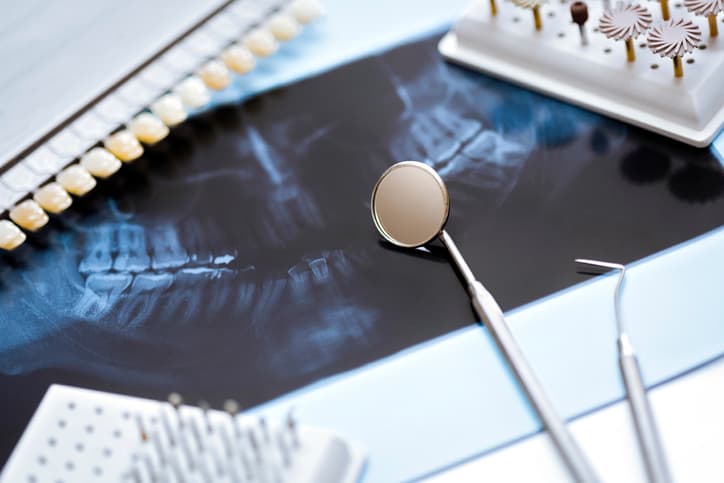 Reasons for Pulling Teeth
Reasons for Pulling Teeth
Periodontal (Gum) Disease. If periodontal disease — an infection of the tissues and bones that surround and support the teeth — have caused loosening of the teeth, it may be necessary to the pull the tooth or teeth.
What to Expect With Tooth Extraction
Dentists and oral surgeons (dentists with special training to perform surgery) perform tooth extractions. Before pulling the tooth, your dentist will give you an injection of a local anaesthetic to numb the area where the tooth will be removed. In some instances, your dentist may use a strong general anaesthetic. This will prevent pain throughout your body and make you sleep through the procedure.
If the tooth is impacted, the dentist will cut away gum and bone tissue that cover the tooth and then, using forceps, grasp the tooth and gently rock it back and forth to loosen it from the jaw bone and ligaments that hold it in place. Sometimes, a hard-to-pull tooth must be removed in pieces.
What to Tell Your Dentist Before You Have a Tooth Pulled
Although having a tooth pulled is usually very safe, the procedure can allow harmful bacteria into the bloodstream. Gum tissue is also at risk of infection. If you have a condition that puts you at high risk for developing a severe infection, you may need to take antibiotics before and after the extraction. Before having a tooth pulled, let your dentist know your complete medical history, the medications and supplements you take, and if you have one of the following:
- Damaged or man-made heart valves
- Congenital heart defect
- Impaired immune system
- Liver disease (cirrhosis)
- Artificial joint, such as a hip replacement
- History of bacterial endocarditis
After You’ve Had a Tooth Pulled
Following an extraction, your dentist will send you home to recover. Recovery typically takes a few days. The following can help minimize discomfort, reduce the risk of infection, and speed recovery.
- Take painkillers as prescribed.
- Bite firmly but gently on the gauze pad placed by your dentist to reduce bleeding and allow a clot to form in the tooth socket.
- Apply an ice bag to the affected area immediately after the procedure to keep down swelling. Apply ice for 10 minutes at a time.
- Relax for at least 24 hours after the extraction. Limit activity for the next day or two.
- Avoid rinsing or spitting forcefully.
- Do not drink from a straw for the first 24 hours.
- Do not smoke, which can inhibit healing.
- Continue to brush and floss your teeth, and brush your tongue, but be sure to avoid the extraction site. Doing so will help prevent infection.
Some aftercare instructions may vary depending on your medical history, the procedure itself and the dentist. Be sure to always follow the direct advice given to you by your dental professional.
When to Call the Dentist
It is normal to feel some pain after the anaesthesia wears off. For 24 hours after having a tooth pulled, you should also expect some swelling and residual bleeding. However, if either bleeding or pain is still severe more than four hours after your tooth is pulled, you should call your dentist. You should also call your dentist if you experience any of the following:
- Signs of infection, including fever and chills
- Nausea or vomiting
- Redness, swelling, or excessive discharge from the affected area
- Cough, shortness of breath, chest pain, or severe nausea or vomiting
The initial healing period usually takes about one to two weeks. New bone and the gum tissue will grow into the gap. Over time, however, having a tooth (or teeth) missing can cause the remaining teeth to shift, affecting your bite and making it difficult to chew. For that reason, your dentist may advise replacing the missing tooth or teeth with an implant, fixed bridge, or denture.
